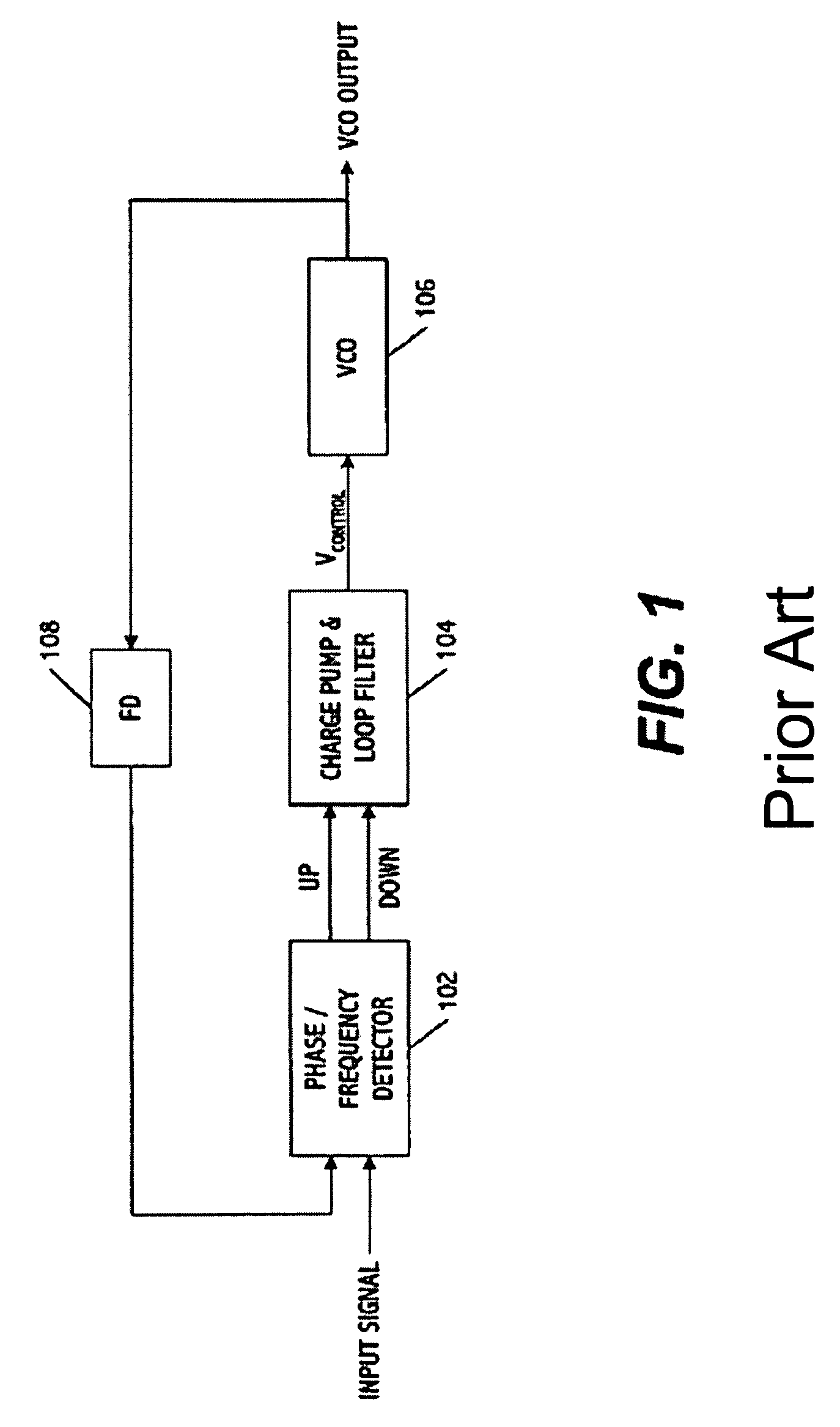System and method for tuning a frequency generator using an LC oscillator
a frequency signal and oscillator technology, applied in oscillator generators, pulse automatic control, electrical equipment, etc., can solve the problems of limited performance, inaccurate, one-dimensional, and slow adjustment, and achieve accurate coarse tuning, small size, and better quality factor
- Summary
- Abstract
- Description
- Claims
- Application Information
AI Technical Summary
Benefits of technology
Problems solved by technology
Method used
Image
Examples
Embodiment Construction
[0037]FIG. 3 shows an LC-VCO which includes two cross-coupled CMOS inverters, an inductor, and two capacitive circuits which are connected in parallel to the inductor. The first inverter is formed from PMOS transistor 302 and NMOS transistor 304, and the second inverter is formed from PMOS transistor 306 and NMOS transistor 308. The inverters are cross-coupled by connecting the common drain of the first inverter to the common gate of the second inverter and vice versa. The inverters thus form a multivibrator. The inductor 310 (L) is connected to the inverters and the capacitive circuits at nodes N1 and N2, either of which may be used to supply the output frequency of the VCO. For illustrative purposes, N1 is shown as supplying the output frequency.
[0038]The first capacitive circuit fine tunes the output frequency of the VCO using two analog varactors (Cv, Cv′) 312 and 318. The second capacitive circuit performs coarse tuning and includes two discrete capacitor arrays (CD, CD′) 314 a...
PUM
 Login to View More
Login to View More Abstract
Description
Claims
Application Information
 Login to View More
Login to View More - R&D
- Intellectual Property
- Life Sciences
- Materials
- Tech Scout
- Unparalleled Data Quality
- Higher Quality Content
- 60% Fewer Hallucinations
Browse by: Latest US Patents, China's latest patents, Technical Efficacy Thesaurus, Application Domain, Technology Topic, Popular Technical Reports.
© 2025 PatSnap. All rights reserved.Legal|Privacy policy|Modern Slavery Act Transparency Statement|Sitemap|About US| Contact US: help@patsnap.com



